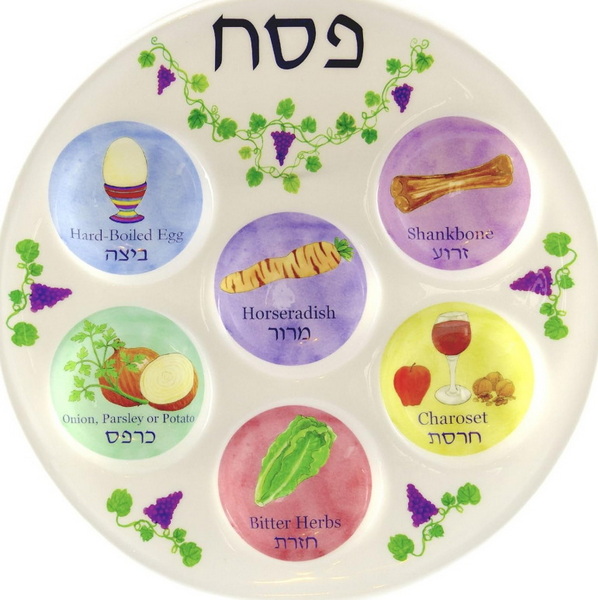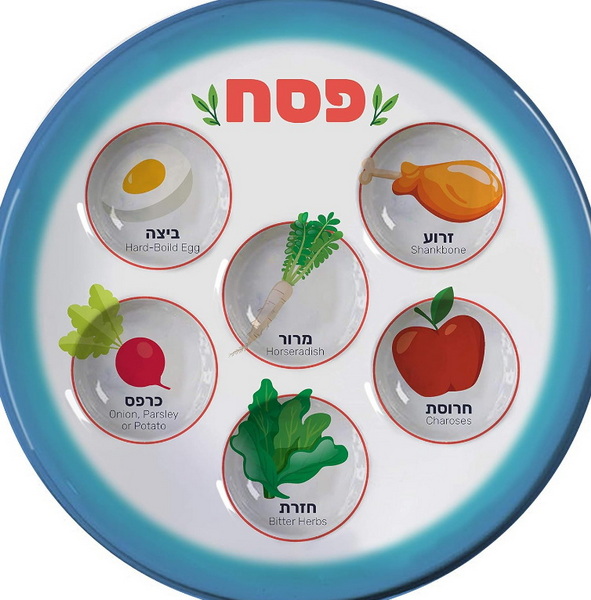
Content Menu
● Introduction to Seder Plates
>> Traditional Seder Plates
>> Disposable Seder Plates
● Durability Comparison
● Benefits of Disposable Seder Plates
● Environmental Impact
● Cultural Significance
● Innovations in Disposable Seder Plates
● Conclusion
● FAQs
>> 1. What are the typical materials used for disposable Seder plates?
>> 2. How do I clean a disposable Seder plate if I want to reuse it?
>> 3. Are disposable Seder plates suitable for hot foods?
>> 4. What are some modern additions to the Seder plate?
>> 5. Where can I purchase disposable Seder plates in bulk?
The Passover Seder is a deeply meaningful tradition for many Jewish families around the world. Central to this celebration is the Seder plate, which holds symbolic foods that retell the story of the Exodus. In recent years, disposable Seder plates have become increasingly popular due to their convenience and ease of use, especially for large gatherings. However, the question remains: are disposable Seder plates as durable as traditional plates?

Introduction to Seder Plates
A Seder plate, or 'k'arah', is a crucial element of the Passover Seder. It typically includes six symbolic foods: maror (bitter herbs), chazeret (another bitter herb), charoset (a mixture of fruits and nuts), karpas (a green vegetable), zeroa (a roasted lamb shank bone), and beitzah (a roasted egg). These items are carefully arranged on the plate to symbolize different aspects of the Exodus story.
Traditional Seder Plates
Traditional Seder plates are often made from materials like ceramic, metal, or glass. These materials provide durability and can be used year after year, making them a sustainable choice for families who value tradition and continuity.
Disposable Seder Plates
Disposable Seder plates, on the other hand, are designed for convenience. They are typically made from plastic or paper and are intended for single use. Despite being disposable, many modern designs are surprisingly durable and can be reused if cleaned properly.
Durability Comparison
When comparing the durability of disposable Seder plates to traditional ones, several factors come into play:
1. Material: Traditional plates are made from robust materials like ceramic or metal, which can withstand heat and repeated use. In contrast, disposable Seder plates are usually made from lighter materials such as plastic or paper, which are more prone to damage.
2. Usage: Traditional plates are designed for long-term use and can be washed and reused multiple times. Disposable Seder plates are meant for single use but can sometimes be cleaned and reused if made from durable plastic.
3. Maintenance: Traditional plates require regular cleaning and maintenance to ensure they remain in good condition. Disposable Seder plates are often easier to clean but may not withstand harsh cleaning products.

Benefits of Disposable Seder Plates
Despite potential durability issues, disposable Seder plates offer several benefits:
- Convenience: They are easy to set up and clean, making them ideal for large events or families with many guests.
- Cost-Effective: Buying in bulk can be more cost-effective than purchasing a single traditional plate.
- Variety: They come in a wide range of designs and materials, offering flexibility for different tastes and themes.
Environmental Impact
When considering the environmental impact, traditional plates are generally more sustainable due to their long lifespan. However, disposable Seder plates can be eco-friendly if made from biodegradable materials or recycled properly.
Cultural Significance
The choice between traditional and disposable Seder plates also reflects cultural and personal values. Traditional plates often hold sentimental value and are passed down through generations, while disposable Seder plates offer a modern, practical approach to the Seder.
Innovations in Disposable Seder Plates
In recent years, innovations in disposable Seder plates have led to more durable and sustainable options. Some plates are now made from plant-based materials or are designed with recyclable components, reducing waste and environmental impact.
Conclusion
While traditional Seder plates are generally more durable due to their robust materials, disposable Seder plates offer convenience and flexibility that can be invaluable for certain situations. The choice between the two ultimately depends on personal preference, the size of the gathering, and the importance placed on tradition versus convenience.

FAQs
1. What are the typical materials used for disposable Seder plates?
Disposable Seder plates are commonly made from plastic, paper, or sometimes melamine. These materials are lightweight and easy to dispose of, making them ideal for single-use events.
2. How do I clean a disposable Seder plate if I want to reuse it?
If you plan to reuse a disposable Seder plate, it's best to wipe it down with a damp cloth. Avoid using harsh chemicals or hot water, as these can damage the material.
3. Are disposable Seder plates suitable for hot foods?
Most disposable Seder plates are not designed for hot foods. They are best used for cold or room-temperature items to prevent damage to the plate.
4. What are some modern additions to the Seder plate?
Modern additions to the Seder plate can include items like an orange to symbolize inclusivity or an olive for peace. These additions reflect contemporary themes and values.
5. Where can I purchase disposable Seder plates in bulk?
You can purchase disposable Seder plates in bulk from online retailers like Alibaba or Smarty Had A Party. These platforms often offer discounts for large orders.

















